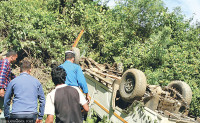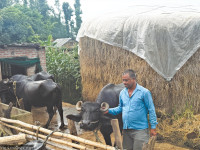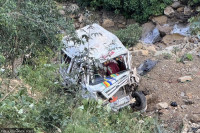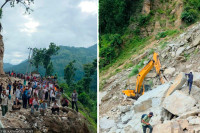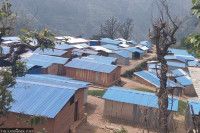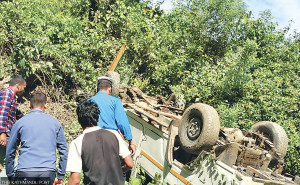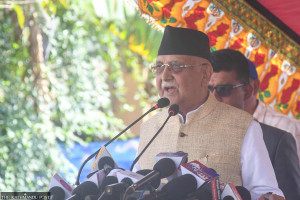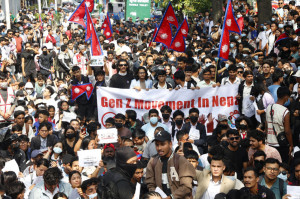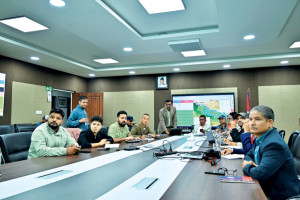Karnali Province
Seismologists install equipment, collect data from affected areas to study quakes
Scientists from Nepal Academy of Science and Technology and National Earthquake Monitoring and Research Centre visited Jajarkot on the third day of the disaster.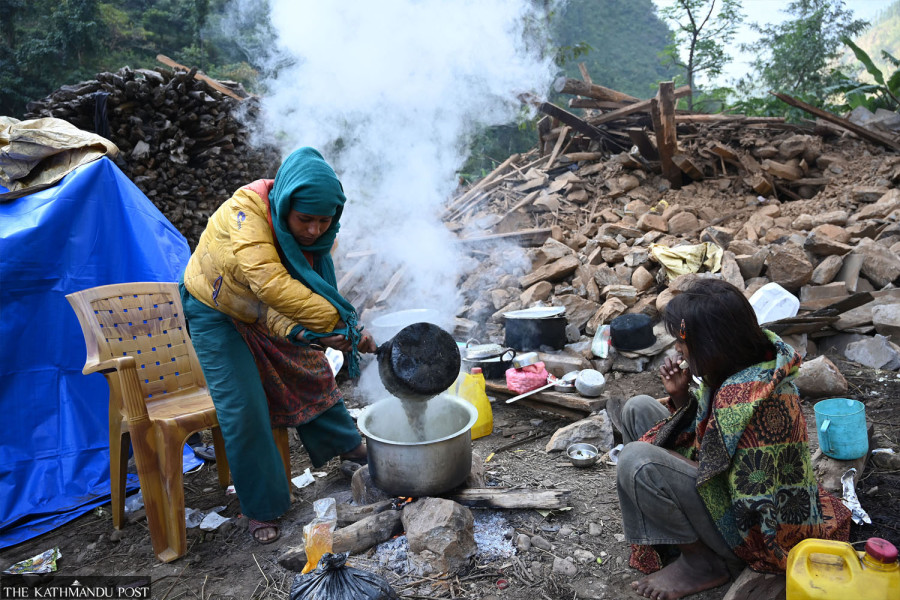
Ganga BC
Since November 3, at least 483 aftershocks have been recorded in Jajarkot and West Rukum as of Friday morning, according to the National Earthquake Monitoring and Research Centre. A team of experts from the Nepal Academy of Science and Technology and the National Earthquake Monitoring and Research Centre had reached the epicentre, Ramidanda, in Jajarkot on the third day of the 6.4 magnitude earthquake for a preliminary study.
The experts returned to Kathmandu on Friday after collecting data. They have also installed two seismometers in Jajarkot and two others in West Rukum.
According to Lokvijay Adhikari of the National Earthquake Monitoring and Research Centre who returned from Jajarkot and West Rukum, the team installed the two seismometers in Barekot Rural Municipality and Kushe Rural Municipality in Jajarkot, and two others in Khalanga and Gotamkot in West Rukum. All four seismometers are in perfect working condition, he said.
“Nepal is prone to earthquakes, and around 10 small earthquakes are recorded daily. But since last week, 483 earthquakes have been recorded. Although the aftershocks are known to release trapped energy/pressure, it would be misleading to assert that no big earthquake will hit the area as a result. It would also be equally impossible to predict the next big earthquake,” said Adhikari. “With the equipment and technology we currently have, we can only find out the epicentre, range, and magnitude of the earthquakes after they occur.”
Adhikari further said that rather than living in fear of earthquakes, it would be advisable for the stakeholders and the local communities to come together and build earthquake-resistant houses and public buildings to mitigate the damage earthquakes can cause.
According to Shiba Subedi, a seismologist at the Nepal Academy of Science and Technology and another member of the expert team, the newly-installed seismometers and collected data will help with a detailed research on seismic activities and to analyse the nature of the earthquakes.
“The study and evaluation of small earthquakes and aftershocks are as important as the big earthquakes because that allows us to gauge the risks and avoid damage,” said Subedi. “Our preliminary study showed that more damage was caused in the settlements and villages that are situated in hills and highlands, such as Chiuritol and Thaple in Nalgad Municipality, Ramidada hill in Barekot of Jajarkot, Thamkama hill, and Athbiskot Municipality of West Rukum,” he added.
According to the National Earthquake Monitoring and Research Centre, the earthquake caused more damage to the settlements around the epicentre, especially those on the highlands. Earthquake waves travel slower, are constant, and remain in hills for a long time, causing more damage compared to sandy and plain areas where the waves travel faster, said Subedi.
Like Adhikari, Subedi also suggested people build earthquake-resistant structures, as Nepal is prone to earthquakes. “The number of human casualties was so high in the November 3 earthquake mostly due to weak and poor physical structures,” said Subedi.
According to experts, 32 earthquakes with a magnitude of 5 release energy equivalent to an earthquake of 6-magnitude. In the same way, if 1,000 earthquakes of 5-magnitude occur, they will release energy equivalent to a 7-magnitude earthquake.
On the night of November 3, the earthquake with an epicentre in Ramidada in Barekot in Jajarkot caused damage in four local units of the district and three local units of neighbouring West Rukum. At least 153 people died and more than 200 were injured. The Ministry of Home Affairs revised the death toll to 153 from 157 on November 6 citing duplication of some names.




 19.12°C Kathmandu
19.12°C Kathmandu
